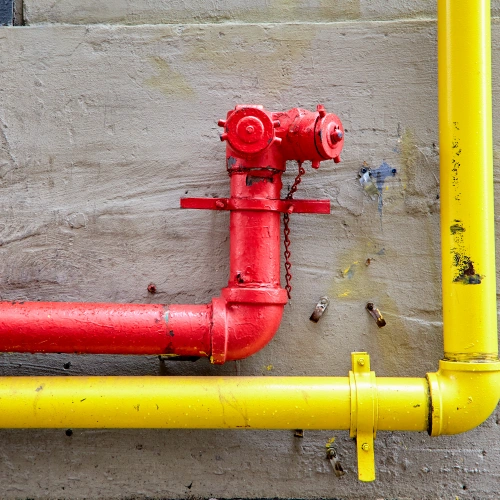The Difference Between 45-Degree and 90-Degree Elbow: Understanding Their Functions and Applications
Pipe elbows are essential components in plumbing and piping systems, used to change the direction of flow. Among the most commonly used elbows are the 45-degree and 90-degree versions. These two types of elbows have distinct features and applications, and understanding the differences between them is key to selecting the right fitting for your system. This article will explore the characteristics, benefits, and uses of 45-degree and 90-degree elbows, helping you make an informed choice for your next piping project.

What is a Pipe Elbow?
A pipe elbow is a type of fitting that redirects the flow of fluid or gas in a pipeline by bending the pipe at a specific angle. Elbows are crucial for navigating obstacles, turning corners, or adjusting the alignment of pipes in confined spaces. They come in various angles, with 45-degree and 90-degree elbows being the most common.
Pipe elbows are made from materials such as stainless steel, bronze, copper, and PVC, each offering unique benefits in terms of strength, durability, and resistance to corrosion. The material you choose will depend on factors like the type of fluid being transported and the environment in which the pipes are installed.
45-Degree Elbow: Features and Applications
A 45-degree elbow shifts the direction of flow by a moderate 45-degree angle. It is commonly used when a smooth and gradual change in direction is required.
Common Applications:
Residential Plumbing: These elbows are frequently used in home plumbing systems to adjust pipe direction in drains and supply lines.
HVAC Systems: In heating, ventilation, and air conditioning (HVAC) systems, 45-degree elbows help guide air through ducts.
Irrigation: In irrigation systems, these elbows allow for controlled water flow around obstacles or for fitting pipes into compact layouts.
Advantages:
Reduced Pressure Drop: The gentle angle of the 45-degree elbow minimizes flow resistance, reducing the likelihood of pressure loss.
Smoother Flow: The less abrupt change in direction makes for a smoother fluid path, which helps maintain consistent flow, especially in systems requiring high efficiency.
Longevity: Less turbulence means less wear on the system over time, making these elbows more durable in the long run.
90-Degree Elbow: Features and Applications
A 90-degree elbow bends the pipe sharply at a right angle (90 degrees). It is used when a pipe must change direction quickly within tight spaces.
Common Applications:
Industrial Piping: 90-degree elbows are often used in chemical plants, oil refineries, and power plants where sharp turns are necessary due to space limitations.
Water Pipelines: In municipal water systems, 90-degree elbows are common for guiding water through various points in a confined layout.
Heating Systems: Steam and hot water systems often use 90-degree elbows to redirect the flow of fluid within compact spaces.
Advantages:
Space Efficiency: A 90-degree elbow allows for quick direction changes in areas with limited space, making it ideal for tight installation environments.
Quick Installation: The simple, direct 90-degree turn means fewer components are needed, and installation is faster compared to more gradual bends.
Compact Design: These elbows are ideal when you need to make sharp turns without requiring a lot of additional space.
Key Differences Between 45-Degree and 90-Degree Elbows
While both 45-degree and 90-degree elbows serve to redirect fluid flow, they differ significantly in terms of their design, impact on flow, and suitable applications.
Angle and Flow Characteristics:
The 45-degree elbow provides a more gradual turn, reducing flow resistance and minimizing turbulence. This results in a smoother flow path and less energy loss.
In contrast, the 90-degree elbow forces a sharp turn, which can increase flow resistance and cause more turbulence, leading to a higher pressure drop.
Space Considerations:
45-degree elbows require more space for installation due to the gentler bend. They are ideal in systems where a moderate direction change is needed without compromising space efficiency.
90-degree elbows, with their sharp turns, are designed for environments where space is constrained and a quick, tight turn is necessary.
Cost and Efficiency:
While 45-degree elbows tend to be more energy-efficient by reducing pressure loss, they can be more expensive upfront due to their smoother design.
90-degree elbows may be cheaper initially but can incur higher operational costs over time due to the increased pressure drop and potential strain on the system.
How to Choose Between a 45-Degree and 90-Degree Elbow
When deciding which elbow is right for your piping system, consider the following factors:
1. Space Availability:
For systems with tight installation spaces, 90-degree elbows are often the preferred choice due to their compact design.
If space allows, a 45-degree elbow may be a better choice for more efficient flow.
2. Flow Efficiency:
45-degree elbows are ideal for systems that require smooth and consistent flow, as they reduce pressure loss and maintain efficiency.
90-degree elbows may be suitable for systems where the flow is less sensitive to pressure drops or where the layout demands a sharper turn.
3. Application Requirements:
For residential plumbing and HVAC systems, where energy efficiency and smoother flow are important, 45-degree elbows are often preferred.
In industrial piping and water distribution systems, where space constraints or sharp turns are necessary, 90-degree elbows are typically used.
4. Material and Durability:
Both types of elbows come in materials such as stainless steel, bronze, and PVC, but the material selection will depend on factors like corrosion resistance, strength, and the type of fluid being transported.
Understanding the differences between 45-degree and 90-degree elbows is crucial when designing and installing a piping system. The 45-degree elbow offers smoother, more efficient flow and is ideal for systems that prioritize energy conservation and reduced pressure loss. On the other hand, the 90-degree elbow is perfect for situations where space is limited and a quick turn is required.
By considering factors such as space, flow efficiency, application requirements, and material choice, you can make an informed decision on which elbow to use. For more complex or large-scale projects, it’s always a good idea to consult with a professional to ensure optimal system performance.
Choosing the right elbow for your piping system is crucial to ensure smooth, efficient flow and long-lasting performance. Whether you need a 45-degree elbow for its efficiency or a 90-degree elbow for its compact design, consider all the factors involved in your project. Consult with a piping professional to make the best choice for your needs.
FAQ Section
Q1: Can a 45-degree elbow be used instead of a 90-degree elbow?
Yes, a 45-degree elbow can sometimes replace a 90-degree elbow, but it will result in a more gradual turn and may require more space. The decision depends on the specific needs of the project.
Q2: Do 45-degree elbows reduce pressure loss more effectively than 90-degree elbows?
Yes, 45-degree elbows cause less pressure drop because their gentler angle creates less turbulence, making them more efficient in systems where pressure loss is a concern.
Q3: What materials are commonly used for 45-degree and 90-degree elbows?
Common materials include stainless steel, bronze, copper, and PVC. Stainless steel is particularly popular in industrial applications due to its strength and resistance to corrosion.
Q4: How do you install a 45-degree vs. a 90-degree elbow?
Both types of elbows are installed in a similar manner, with one end connected to the pipe using welding, threading, or flanging, depending on the material. However, 90-degree elbows require more precise alignment to ensure the sharp turn is executed correctly.
